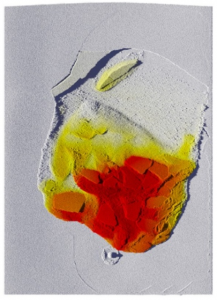Context:
We perform at SLAB controlled simulations of avalanche dynamics in view of improving risk assessment and hazard mapping. The simulations are based on the Material Point Method, a hybrid Eulerian-Lagrangian numerical method and finite strain elasto-plasticity [1]. Several simulations are performed to understand the effect of cohesion and friction on the avalanche velocity and runout.


Fig. 1. Example of 3D MPM snow avalanche simulation and velocity profile.
Project:
The computational cost of these simulations is very high. Hence, Machine Learning (ML) appears as a promising approach to perform near-real time avalanche simulations. Thousands of MPM simulations performed at SLAB will be used to train a ML model similar to Holden et al. [2]. In this paper the system state is described as a vector of vertex positions. PCA is performed to reduce the representation of the state-space. Updates from previous states to later states are then efficiently computed using a Neural Network (NN). Our simulation results contain position and velocity of Lagrangian particles from the release to the arrest of the avalanche.
Resources provided to the student:
- Position and velocity of particles for 1000 MPM simulations (format .bgeo or .abc) for different values of mechanical properties of the snow
- Guidance on MPM and avalanche simulations
Outcome:
Perform a literature review of the field of data-driven physics based simulations. Evaluate the most appropriate ML framework to be used. Train and test the model on simple 2D avalanche geometries.
Prerequisites:
Background in ML algorithms, Python and c++ languages. Curiosity, desire to learn quickly and advance personal skills in this field.
References:
[1] Gaume et al. 2018. Dynamic anticrack propagation in snow. Nature Comm.
[2] Holden et al. 2017. Subspace Neural Physics: Fast Data-Driven Interactive Simulation. Proceedings of ACM.